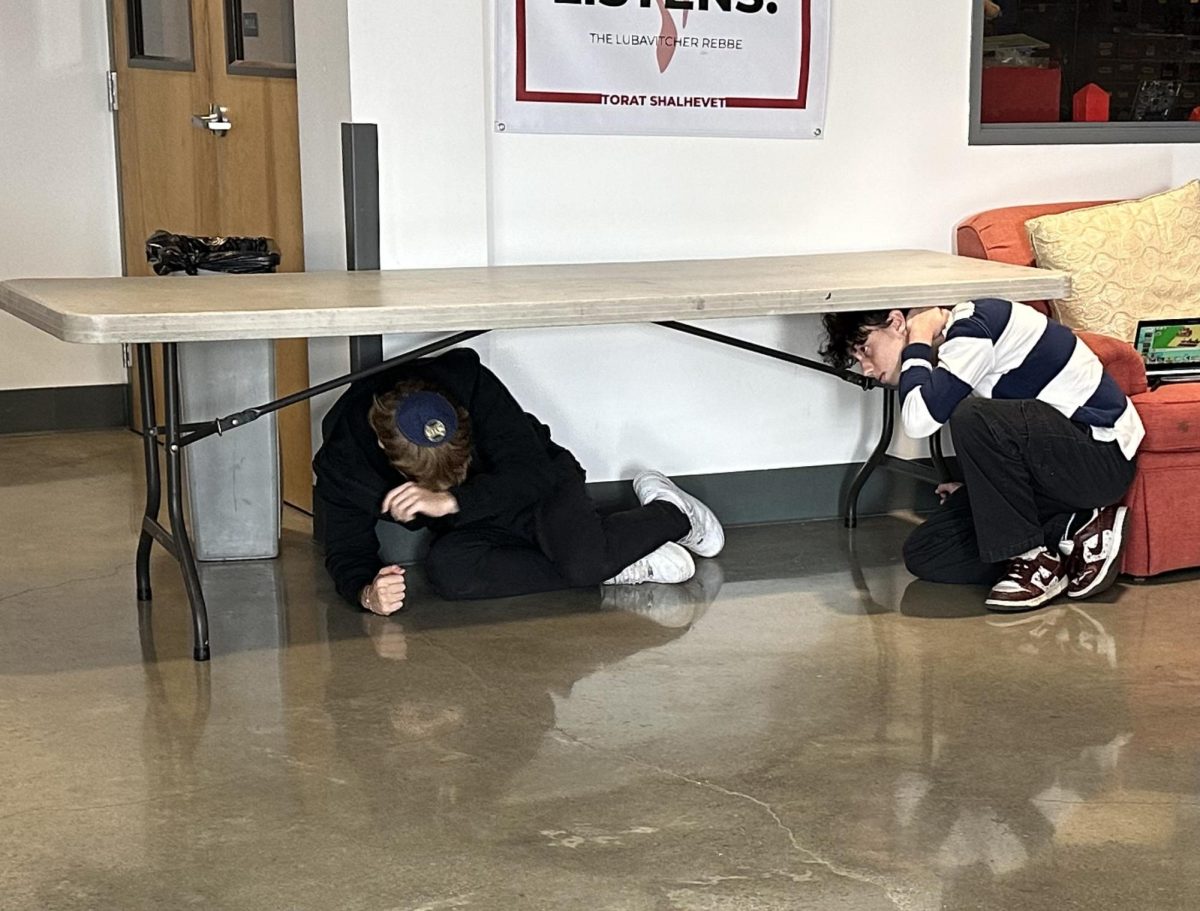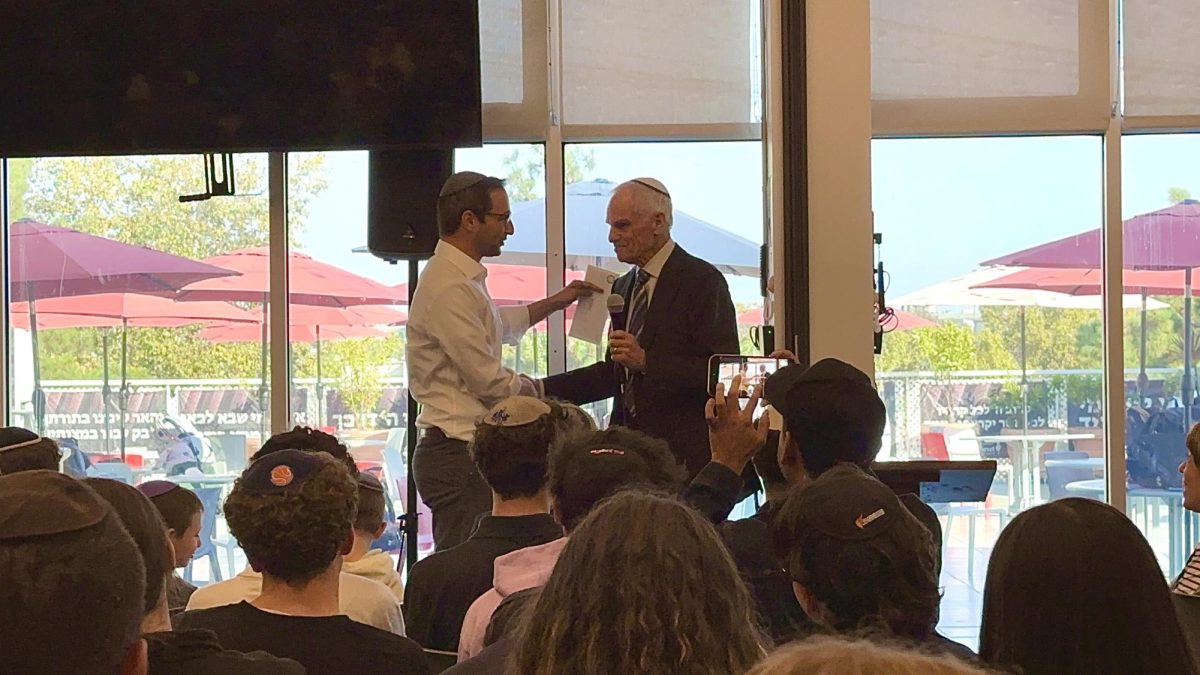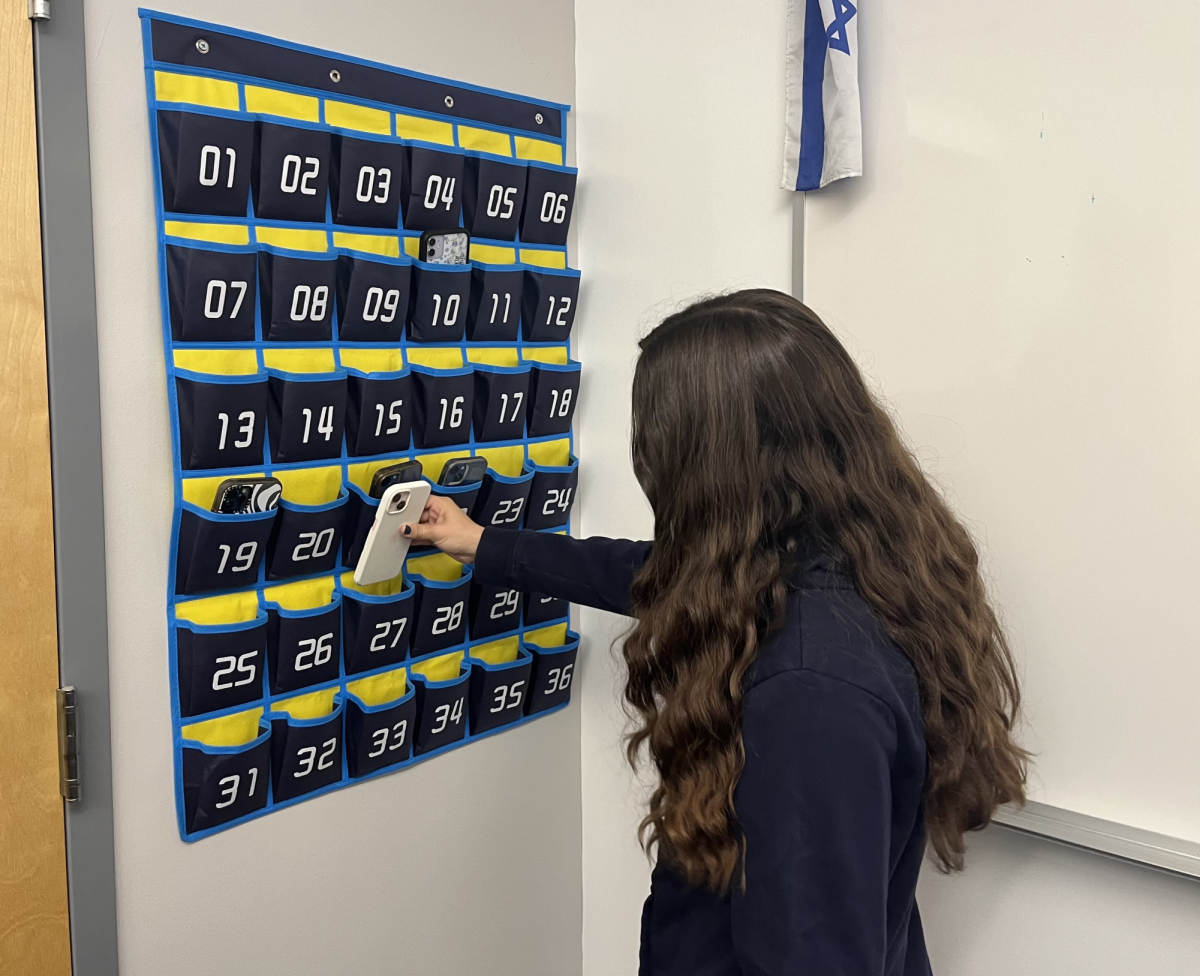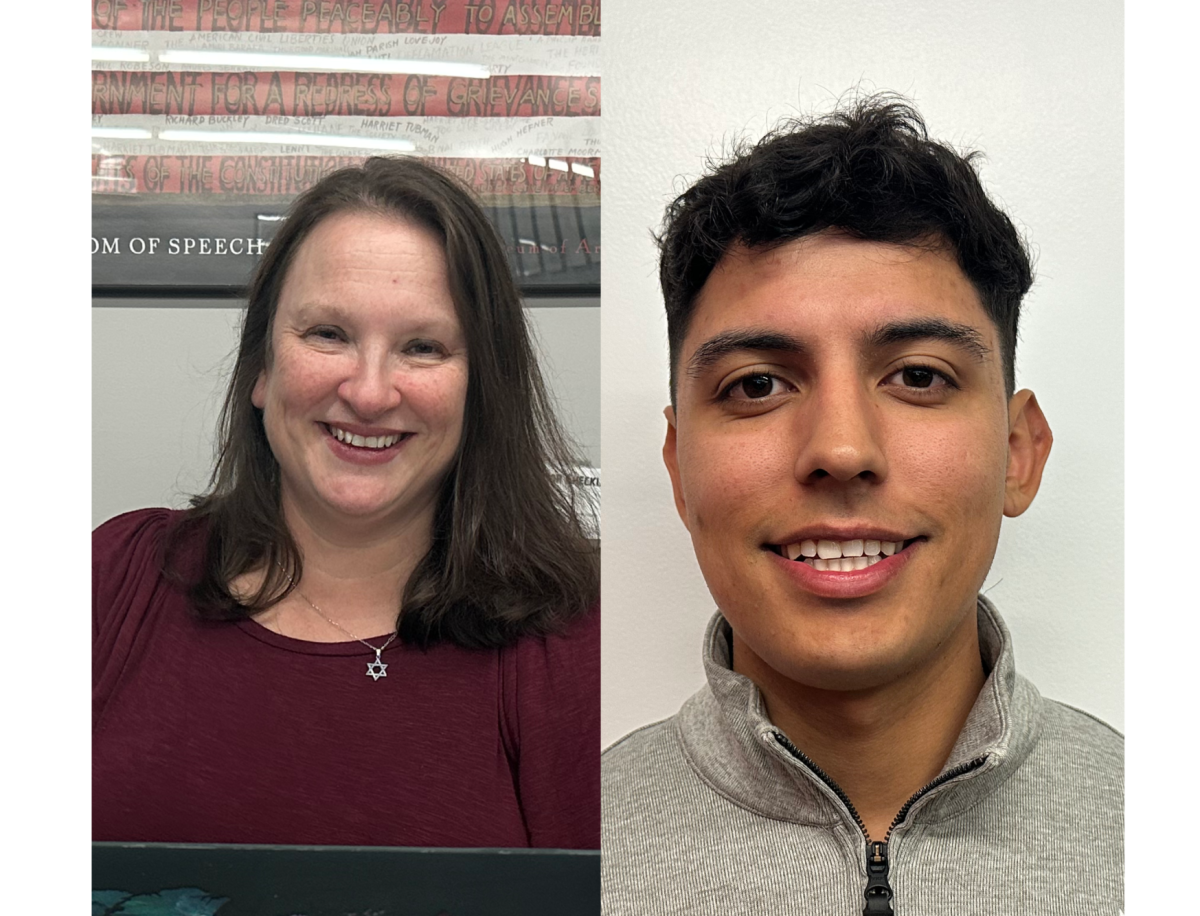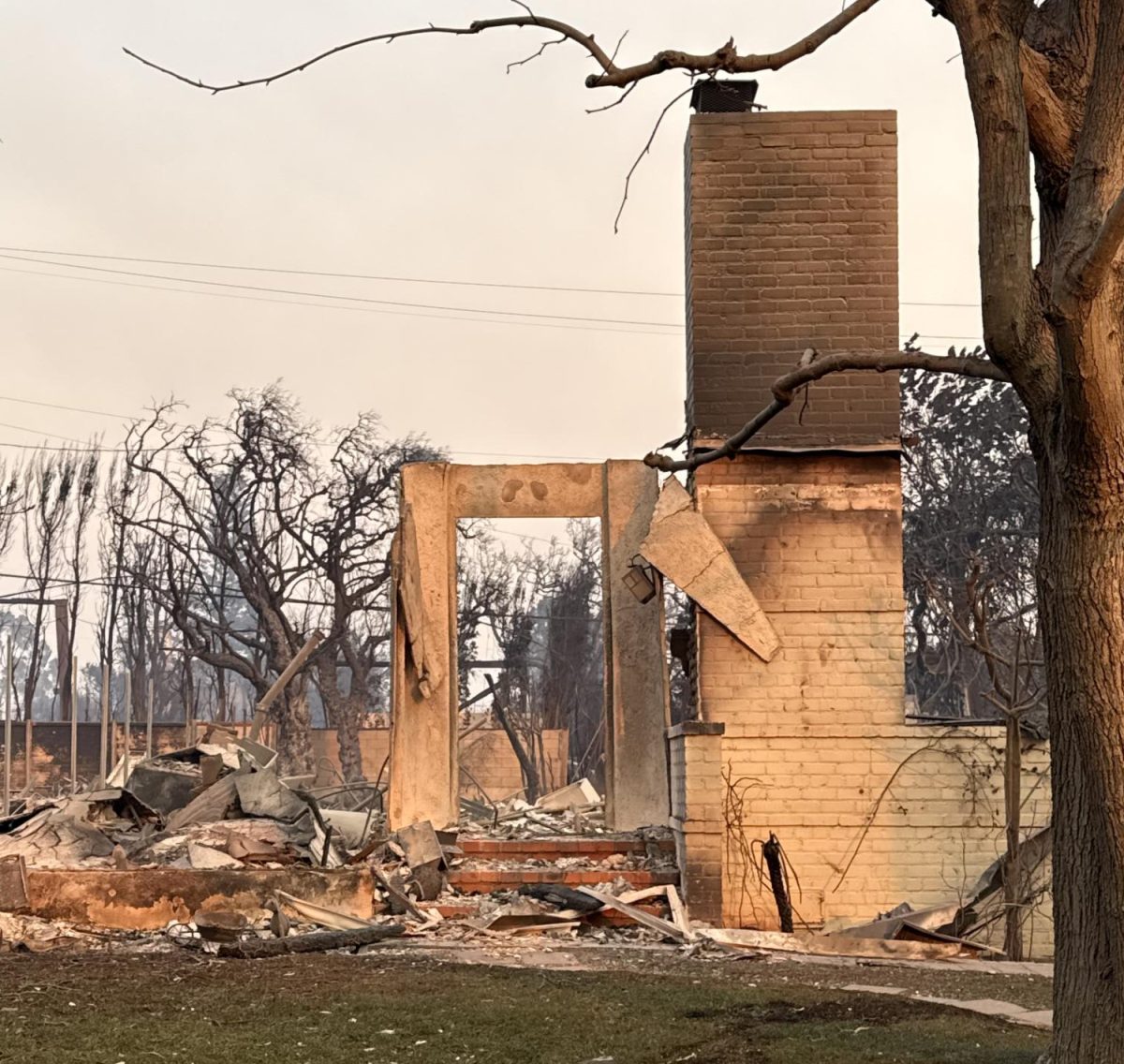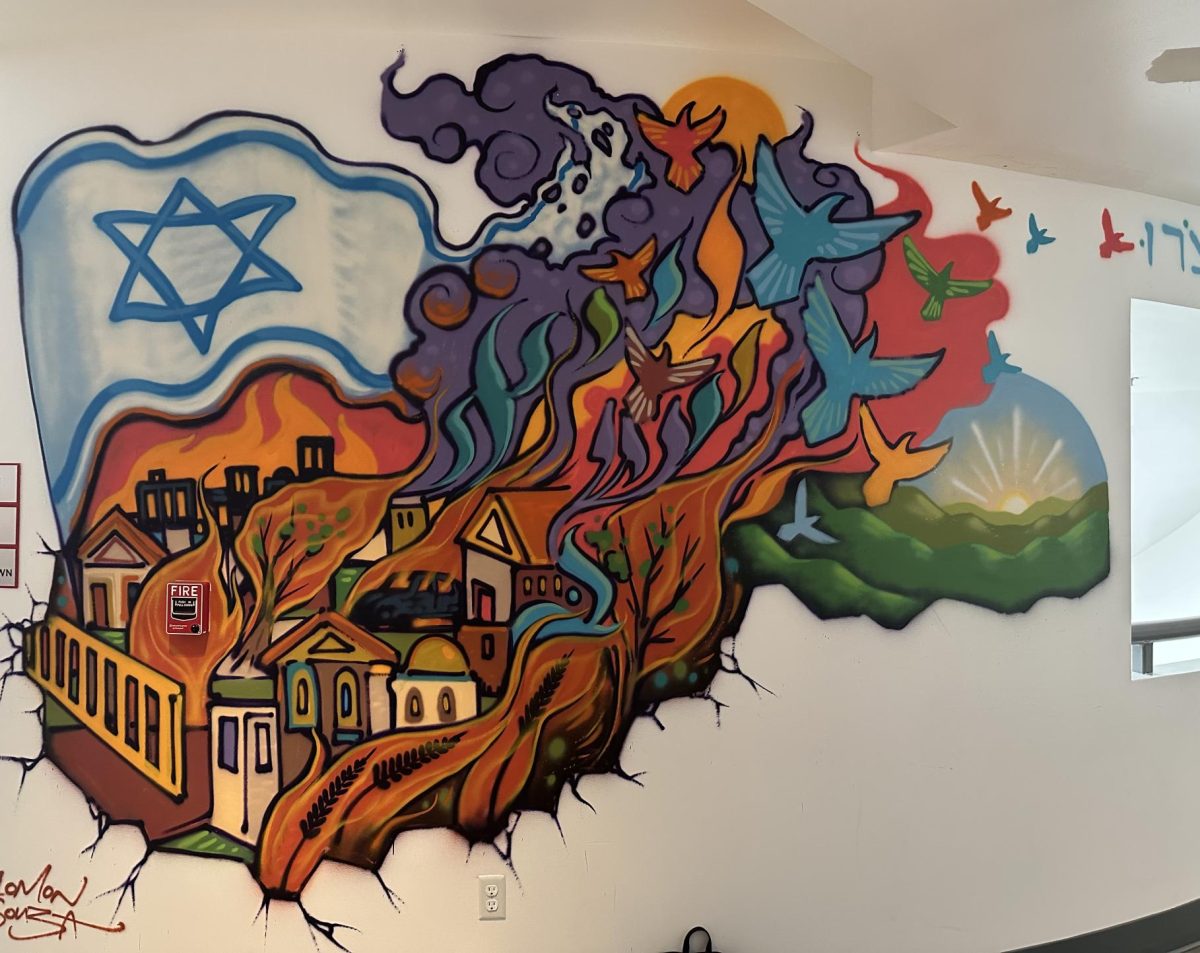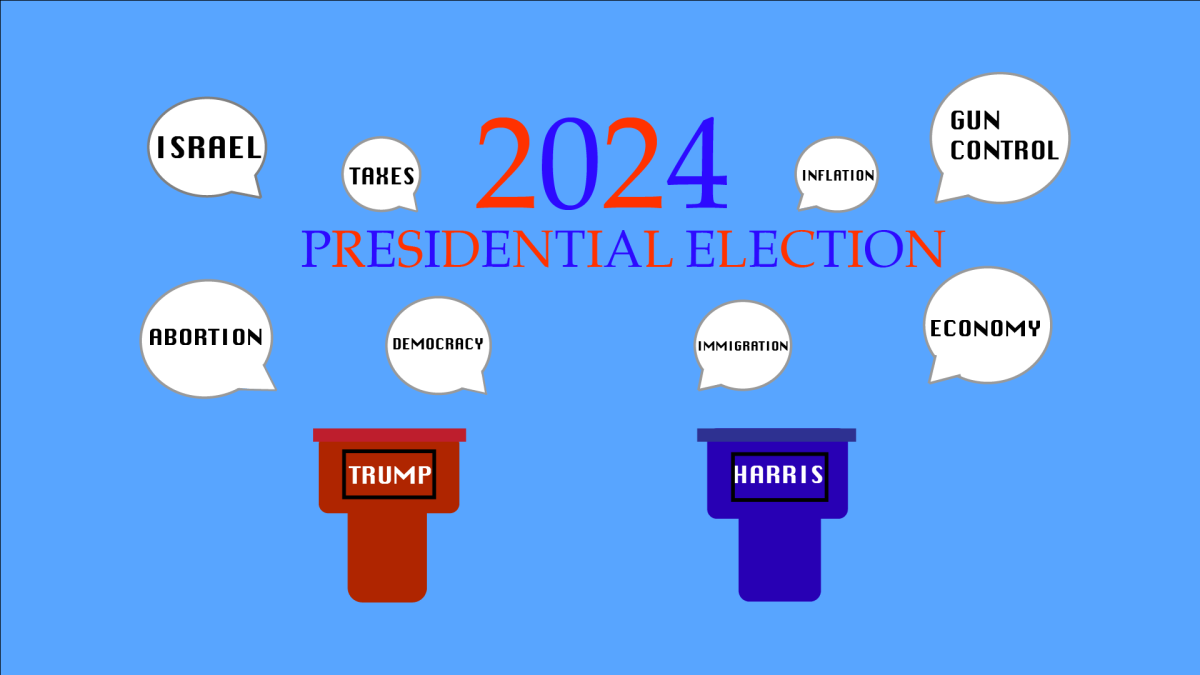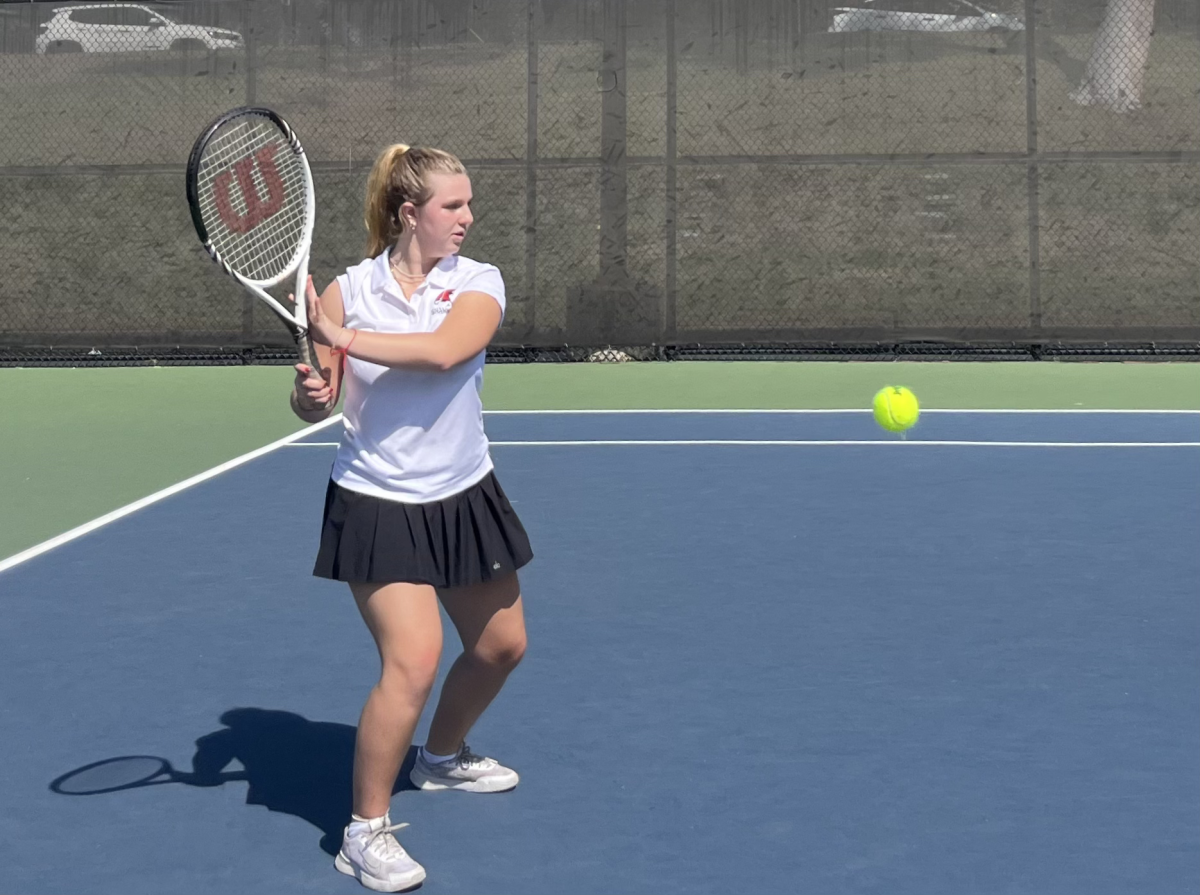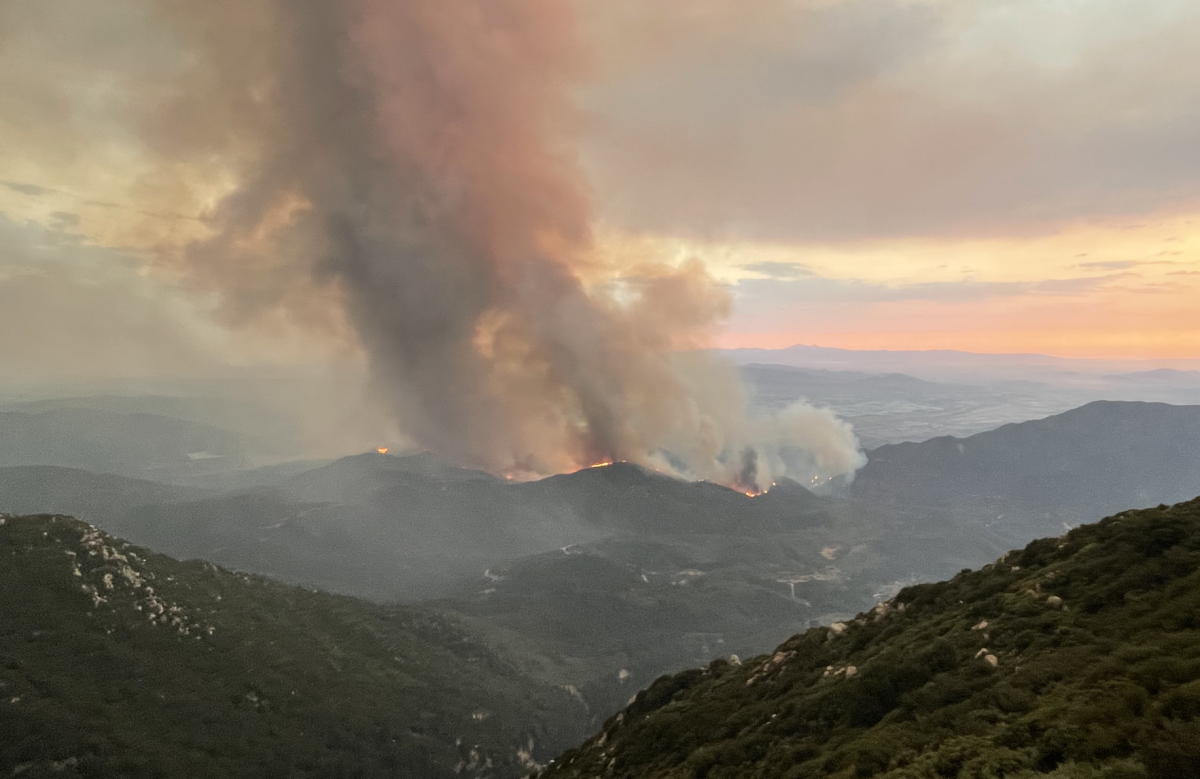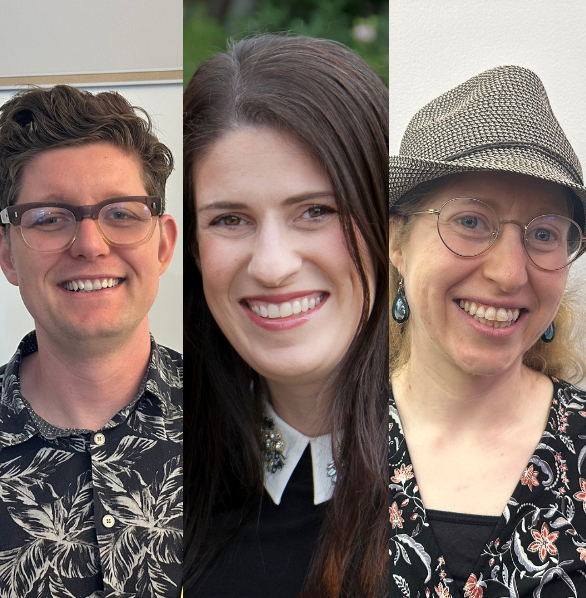“Is that some kind of religious thing?” a fellow 16-year-old asked junior Josh Meisel, who was wearing his tzitzit hanging outside of his shirt. Josh took the whole garment off, threading it out from under his white v-neck, and began explaining symbolism of the 32 strands of braided thread as his questioner and a few friends looked on.
Not so unusual, perhaps, for a religious Jewish teen living in Los Angeles – a diverse city with plenty to be curious about. Get two teens together and questions will fly.
But the group gathered at Shattuck Ave. Park in Koreatown on Lag b’Omer weren’t meeting each other by accident, and their curiosity was tinged with unexpected admiration.
In a first-ever get-together — organized by students without adult participation – 11 Shalhevet students joined 33 members of the youth group at the Islamic Center of Southern California, Los Angeles’ largest mosque, on May 22. The event was designed to give both sides the opportunity to get to know people they wouldn’t usually meet.
Beginning and ending at the mosque, the students spent most of Sunday playing, eating and talking at the city recreation center a block and a half away.
“I thought that the two groups would have a difficult time integrating, but everyone got along so easily and quickly,” said the Islamic Center’s Nuor Shatila, a junior at Burroughs High School in Burbank, who co-organized the event with Shalhevet junior Leila Miller.
“Friendships were formed and I never expected that to happen,” Nuor said. “But I’m so glad it did!”
It turned out to be a day of surprises, overcoming not just stereotypes but also the assumption that Judaism and Islam were so different that they would find one another’s religions hard to understand.
“I never knew Judaism and Islam were so similar,” said Shalhevet sophomore Erin Sharfman. “Also, I didn’t know each individual woman gets to choose to wear the headdress whenever she feels ready. I like that it represents taking a step spiritually, rather than a religion forcing something on them at a specific age.”
The idea blossomed from Leila’s trip to the mosque for a Boiling Point article in January about Los Angeles’ Muslim teens. When she reached out to mosques in the area, the Islamic Center was the first to respond, and she spent several Sundays meeting with high school students there.
“When I met the girls, I really liked how open they were,” said Leila. “I wanted to give the kids at Shalhevet the same opportunity that I had to meet people that I wouldn’t have met otherwise, regardless of whether people have misconceptions or not.”
Everyone went with high hopes, but few expected to discover that each group’s teens knew as much as they did about the other’s religion, though there was still much to learn.
Shalhevet students demonstrated their Islamic knowledge in a game playfully dubbed “the pinecone game,” in which individuals had to answer questions, mostly about pop culture. If they knew the answer, they could raise a pinecone, or they could consult with members of their team before running to the other side to try to grab the pinecone first, to be eligible to answer the question.
The teams were mixed, but at one point, the questioners asked for only Shalhevet runners. The question was “Name the Five Pillars of Islam, in Arabic.” No consultation was needed — all the runners dashed toward the other side without hesitation.
It turned out they’d all been tested on the Five Pillars in Mr. Jason Feld’s Modern Middle East class, and knew them instinctively. The Muslim kids clapped and laughed, impressed.
The Jewish teens were similarly surprised to find out that the Muslims knew about Yom Kippur, because their Ashura fast is tied explicitly — by Mohammed himself — to the Jewish fast. While Ashura falls on different days from Yom Kippur, and the there are also other reasons for the non-obligatory Ashura fast, it still links the religions in a way the Shalhevet students found surprising.
After the games, the group shared pizza and ice cream, settling without prompting into mixed-religious groups. Conversation ranged from light chitchat to in-depth discussion on the similarities and differences between the two religions.
Current events weren’t off limits, either. Shalhevet teens asked the youth group members how they felt about the planned Islamic center being built near Ground Zero in New York, while youth group members asked Shalhevet students how they felt about the possibility, suggested by President Obama, that Israel return to pre-‘67 borders.
“I wouldn’t compare a mosque at Ground Zero to a victory thing,” said the Islamic Center’s Kamal Moummad, in response to an argument several Jewish students had heard about the mosque “marking the territory.”
Muslim students also spent some time refuting common misconceptions about Islam that are widely spread around America, particularly that Islam is trying to take over the United States. The youth group members explained that part of their culture is respecting the laws of the land.
A similar law is reflected in Judaism, where Shabbat Kiddush is even allowed to be made on a common drink of the country if wine isn’t available. There is also the law of dina d’malchuta dina – the law of the land is the law.
Parallels were also found on the subjects of modesty and relationships. Several girls from the Islamic Center wear the traditional Muslim head covering, the hijab. When asked about it in public school, they reply that it’s considered a personal choice and a sign of maturity in Islam.
“I get different reactions, and I did get a few comments,” Nuor Shatila told the group as it enjoyed a rare moment of sunshine on the otherwise cloudy day. “They know I’m a normal person and not a terrorist or anything.”
Shock came on the other side when Shalhevet junior Josh Meisel explained to the group that he is shomer negiah, meaning he refrains from touching the opposite gender until marriage. While the Muslim kids observe laws about propriety and modesty, they had never observed anything so extreme.
Josh also introduced the Islamic kids to tzitzit. He took his off to show one of the boys at the event. Another girl watched patiently as Josh and some new Muslim friends played basketball, waiting for the opportunity to find out about this foreign item of clothing.
While the organizers originally feared there would be awkward moments or trouble breaching their comfort zones — Leila’s father, law professor Jonathan Miller, and the Islamic Center’s Imam Jihad Turk were hovering in the background just in case — it never happened, perhaps because the teens who had signed up were naturally friendly and curious.
“We have really nice people at Shalhevet, and I know the people at this youth group are really nice and really want to talk to you,” said Leila Miller. “That’s one of the main reasons why this event worked.
Muslims outnumbered Jews at this event 3 to 1, possibly because both the time and location were a part of the youth group’s weekly routine. Shalhevet students had to clear their schedules, and some couldn’t make the almost half-hour trek past East Hollywood to the neighborhood of the mosque.
In Facebook postings and via e-mail, students from both sides have requested that the next event meet halfway. It’s also evident from social media that students who couldn’t attend are buzzing, curious when the next event will be.
But while continuing their interfaith connection is a major priority for students, teenage responsibilities will be keeping them apart for now.
“People have been telling me they want another one,” Leila said. “I’m really happy for them if they want to help create one … Maybe after finals week, or probably at the beginning of next year.”


